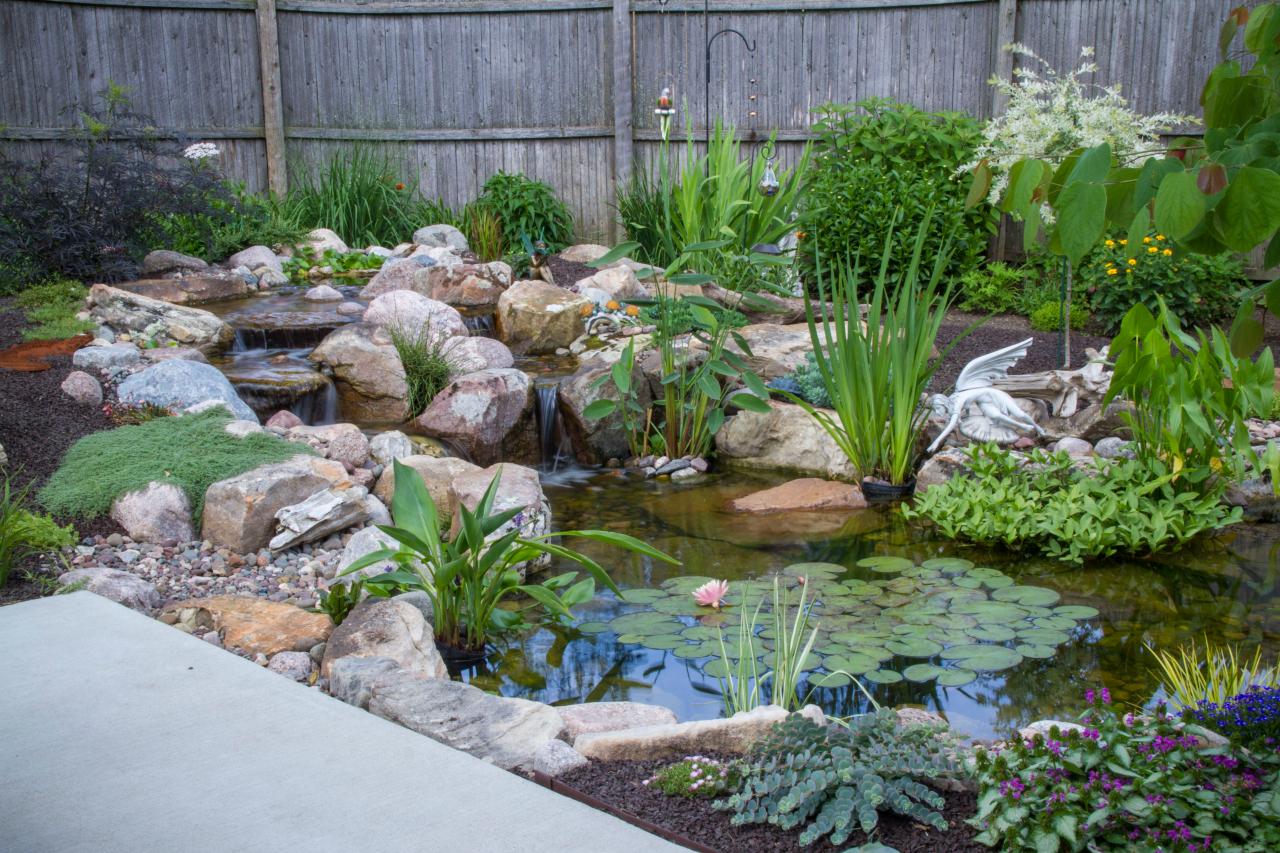Creating a pond in your garden means creating a natural zen corner where you can relax. Aquatic plants, pebbles, waterfall, minnows… The pond is an ecosystem that you must maintain. Made of polyethylene or on canvas, volume, dimensions…choosing the ideal type of pond can sometimes be a daunting task. But you’ve reached the right place! In today’s article, we talk more about different types of ponds and how to choose the perfect one.
Why Install a Garden Pond
Can you imagine anything more exotic and original than a pond in your garden? A small natural haven of peace, where you can relax, contemplate the fauna and flora, and which will also give character to your plot. However, the development of a garden is not done on a whim. Before starting the (minimal) work, you will have to prepare your project.
The location, size and type of the pond are important aspects to consider. You should also think about maintenance, so that the water in it can support aquatic plants and possibly fish.
The location of your future pond is essential, both for its use and for it to develop a clean life. The incidence of sunlight is essential. If it is too exposed, the growth of unwanted plants and algae will be uncontrollable; if you don’t have enough sun, the plants will not grow properly.
It is essential to find a balance between light and shade. To solve this problem, you can, for example, plant a plant “curtain” (composed of shrubs) near your future pond that provides the necessary shade and helps regulate the water temperature.
Inground or Elevated Pond
In a small space (a terrace, a balcony, etc.) and if you want a watery touch, raised ponds can be a solution. They are generally limited in volume, and are quick and easy to install and remove. As for the in-ground pool, it offers multiple possibilities. Whether it’s prefabricated or built on site, your options are wide. Large volume, important depth, possibility to accommodate plants and fish…. It is truly the recommended solution to enjoy a corner of nature and create a new ecosystem.
Structure of a Garden Pond
In broad terms, you usually have two kinds of ponds.
Prefabricated Pond
The first is to get a prefabricated pond. You’ll place the pond in the hole you’ve dug, on a bed of sand for stability. The pond shapes are interesting.
Quick and easy to install, this pond is usually made of polyethylene. It resists well to the passage of time, the action of the sun and the variations of temperature. Large ponds are usually a bit expensive. Because it is prefabricated, the pond cannot be modified. However, this type of pond is an easy solution to install and decorate.
Concrete Pond
The second is that you build the garden pond yourself by digging it with a shape and options to your liking, and placing a specific liner . The preparation is longer, but less expensive. This solution is interesting especially if you want to have a large pond.
It can be buried or raised. Concrete allows you to create shapes, volumes and dimensions according to your preferences. Very resistant, the concrete pool is fully customizable. However, its design and construction require some technical knowledge. In the event of a construction defect, watertightness can be compromised. Given the complexity of its creation, its cost is high and its installation quite laborious.
Apart from the installation difficulties associated with the use of a liner (foundations, shapes, fastening, risk of perforation, watertightness, etc.), this is a solution that, on the one hand, gives free rein to your imagination and, on the other, is very affordable in terms of price. The liner pool, once installed and packaged, has a very natural look. It is an interesting option if you want a large pond.
Size of the Garden Pond
It’s essential that your pond is sized to fit your yard. Depending on your plans for your pond, there are certain rules you need to follow. If you only want to populate it with plants, it should be between 15 and 60 centimeters deep and have a surface area of at least 1 m2 . If you also want to introduce fish, the depth will have to increase to at least 1 meter, and the surface will be extended to at least 2 m2. Remember that any ecosystem grows more easily and quickly when it has space.
Here you go! You now know more about ponds and how to choose one for your garden. If you are looking for professionals to install you pond, check out Aqua Spray Irrigation Inc., which provides innovative landscaping and irrigation services in Florida.



